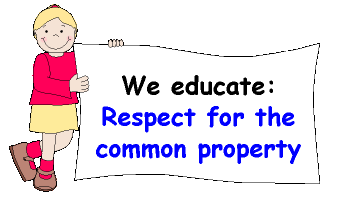|
The education of respect for the common property will include respect for the things that in the school are common properties and for social properties, such as: parks, libraries, theatres, monuments, museums, cinemas, etc. The child has to be taught from a very early age at school not to break plants in the garden, not to mistreat furniture, not to paint on the walls, to take care of the books in the library, the corners, water fountains, decorations, sculptures, paintings, etc. In the community and in the cities there are properties that all the population use and enjoy and it is necessary to teach the little ones not to soil them by throwing papers and leftovers in the streets, parks, fountains, theatres, cinemas. Also, not to mistreat the animals and plants of parks and zoos, nor to break seats of places of common use like the cinemas, libraries, video rooms, theatres, etc. To take care of the artistic and cultural patrimony of the city where we live (buildings, archives and libraries, paintings and decorations). The teacher, parents and adults in general will have to be the best example that the child has in this learning. |
ACTIVITY
No 1 |
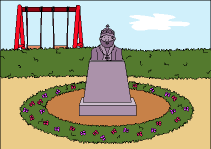 |
Summary of the activity: The children will watch videotapes, photos or pictures, with some of the cultural properties of the country and the community where they live (Museums, theatres, parks, etc), later we will talk with them about how to take care of them and to respect them because they are everybody’s heritage. Finally we will make constructions, models and drawings of some of the cultural properties of the city. Objectives:
Procedures:
Material Resources: Videotapes, CD, pictures, cards with views of the city’s cultural patrimony, coloured pencils, watercolours, paper, clay or plasticine to model, building blocks.
Development of the activity: These cultural properties will be shown using pictures, photos, digital support or videotapes.
2nd Part
3rd Part They are common properties because they are for the benefit of all those who visit them, either from our country or from other countries that come to know them, to contemplate their beauty and to learn new things.
4th Part |
CRITERIAL
ASSESSMENT |
|||
Observed
conduct |
YES |
NO |
Comments |
They
recognized our cultural patrimony and why it is necessary to respect
it and to take care of it. |
|||
They
needed help to know our cultural patrimony and why it is necessary to
respect it and to take care of it. |
|||
They
made pretty constructions, models and drawings of some cultural properties. |
|||
They
needed help to make pretty constructions, models and drawings of some
cultural properties. |
|||
They showed feelings of care and respect towards the common properties
of their city, country or community. |
|||
| They were able to assimilate the notion of common property. | |||
ACTIVITY
No 2 |
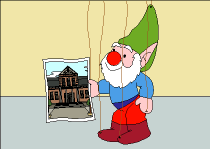 |
Summary of the activity: There will be a conversation with "Solomon" the puppet to show through pictures what a common property is and why we have to take care of and respect it. It will end with a motion game. Objectives:
Procedures:
Material Resources: Pictures, pieces of chalk to paint the squares of the motion game on the ground.
Development of the activity: "Good
morning my friends. How are you? Do you know what common properties are? If you do not know I will teach you because I know it very, but very well." The puppet explains and displays pictures to teach the children what a common property is, which we all enjoy and learn, appreciating its beauty as well as the works of art such as paintings, sculptures, etc. Others like the parks, fountains, cinemas, theatres, where we visit and play in them, we watch films, plays and we also learn. The streets, buildings such as banks, offices, shops or warehouses, in which we take a walk, go shopping and where our parents work. There are museums, monuments, churches, in which we see precious works of art, we learn the history of our country, or we pray. Also the school where we learn is a common property of all the children who attend it. There are other things that are not common properties because they are not for the benefit of everyone but they are personal, such as the clothes that we put on, our shoes, our own school notebooks, our toys, etc.
2nd Part A group of squares are drawn on the floor, the child throws a bottle cap and he must jump to where the bottle cap falls, he will stop where the bottle cap fell, pick it up and he will also pick up a picture that is in that square, which will contain the representation of a place or an object, and the child will have to say if it is a common property or not. If it is a common property he will have to identify it, to describe it and to say how we have to take care of it and to respect it. The cards will be of the common properties already known by the children, so that they can describe them, for example: museum, park, theatre, church, square. There will be cards with other properties, for example: shoes, clothes, ring, fan, wallet. The
rules of the game are: In each square there will be only one card and on the ground there will be painted as many squares as the educator considers convenient but they should not exceed nine and every two squares a double one should be drawn so that the child can put down both feet and rest, for example: The 1st and after the 2nd, then the 3rd and the 4th will be parallel (one beside the other so that the child can put both feet down and rest). The 5th and the 6th, later the 7th and the 8th will be parallel and the 9th square is the finish and one returns jumping in the same way. |
CRITERIAL
ASSESSMENT |
|||
Observed
conduct |
YES |
NO |
Comments |
They
recognized what a common property is. |
|||
They
needed help to recognize what a common property is. |
|||
They
identified the place, they described it and they said correctly how
we have to take care of it and respect it. |
|||
They
needed help to identify the place, to describe it and to say how we
have to take care of it and respect it. |
|||
They differentiated between common and personal property. |
|||
ACTIVITY
No 3 |
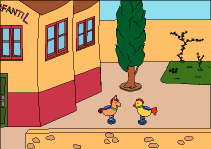 |
Summary of the activity: Through a conversation we will teach the children how to take care of the things that are common properties in the school because all the children use them. Objectives: To teach the children to take care of and to respect the common properties of their school. Procedures: Material Resources: The "Little Goblin of the school" Puppet.
Development of the activity: "They are common properties because we all use them and it is necessary to respect them and to take care of them so that they are not broken nor spoiled because later the school will be very ugly. Do you want a pretty school?"
2nd Part From the suggested measures, the educator will explain those that he considers convenient according to the characteristics of his children and their school. Later, he will ask the children about these measures and he will urge them to carry them out. He will tell them that they must remember that in the school there is the "Little Goblin of the school" puppet (he shows the puppet), which sees everything that the children do so that later he tells us. |
CRITERIAL
ASSESSMENT |
|||
Observed
conduct |
YES |
NO |
Comments |
They
recognized which are the common properties in the school. |
|||
They
needed help to know which are the common properties in the school. |
|||
They
learned the measures to take care of and to respect the common properties
of the school. |
|||
They
needed help to learn the measures explained by the educator to take
care of and to respect the common properties of the school. |
|||
They proposed conducts to be followed to respect the common property
of the school. |
|||
ACTIVITY
No 4 |
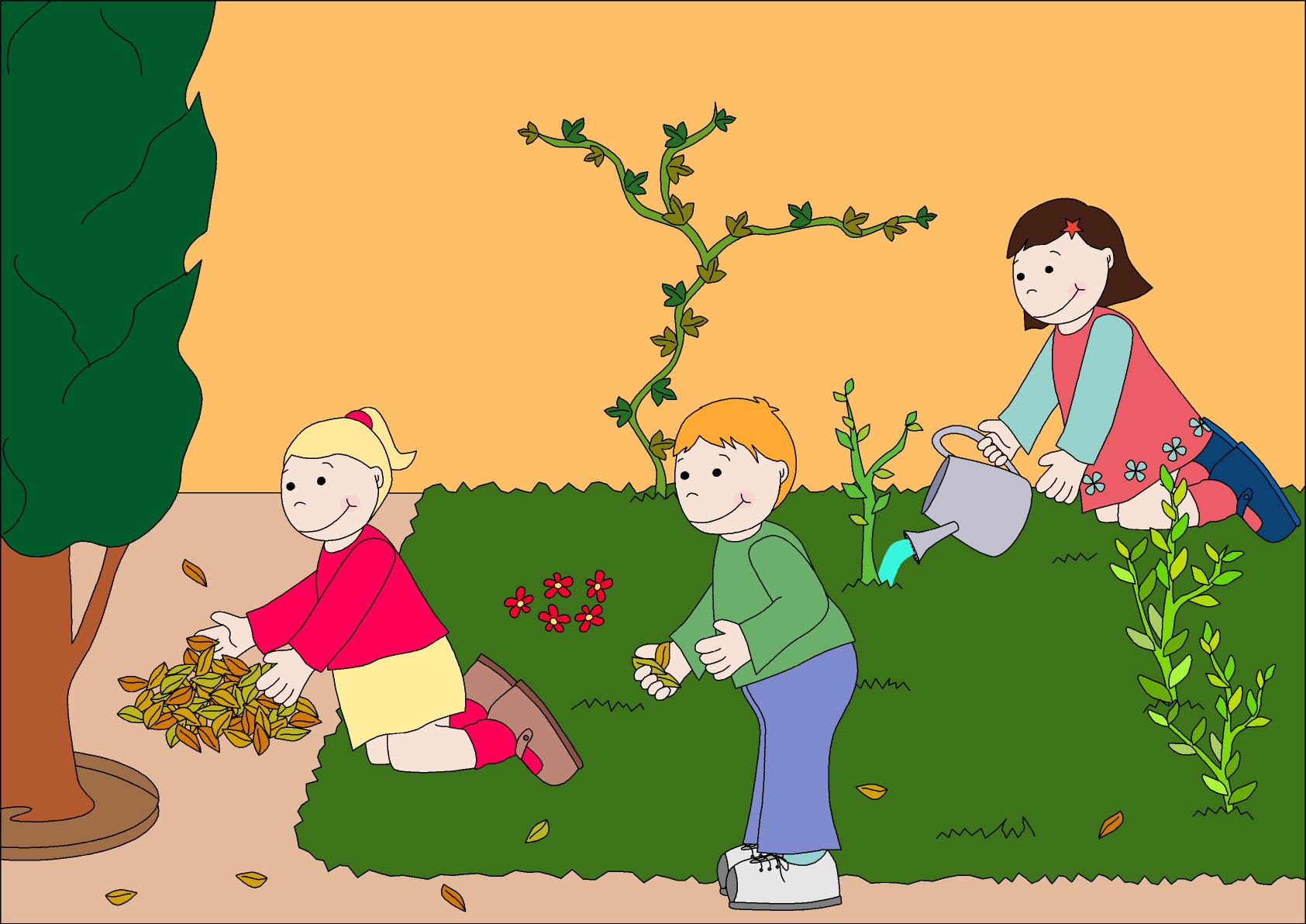 |
Summary of the activity: We will work as a group with the objective of cleaning and embellishing some places of common use in the school. Objectives: To get the children to feel satisfaction when doing a socially useful work for their school. Procedures: Material Resources: The necessary tools according to the collective work that the educator decides to do with the children.
Development of the activity: Later he distributes the tasks, taking care that they do not exceed the physical possibilities of the children. For example, it can be the cleaning of the outside area or the garden. Some children will pick up the dry leaves, others papers, others will take out the weeds, etc.
2nd Part
The children will do the work; they can sing songs aboit the work that is being done.
3rd Part It is like that, that we have to act to take care of and to respect the school, because in it the children spend a great part of their time every day, in it they learn to be good and cultured. |
CRITERIAL
ASSESSMENT |
|||
Observed
conduct |
YES |
NO |
Comments |
They
knew how to carry out the assigned tasks. |
|||
They
needed help to carry out the assigned tasks. |
|||
They
felt satisfaction for the work done. |
|||
They
understood the intention of the collective work. |
|||
They expressed ideas of how to take care of the common property. |
|||
ACTIVITY
No 5 |
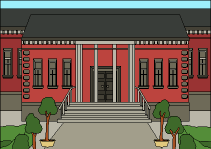 |
Summary of the activity: The activity consists of a stroll to a place in the city to teach the children how to respect and to take care of the common properties. It can consist of a visit to a museum. The educator can select another place, whenever it is appropriate for the fulfilment of the proposed objective. Objectives: That the children visit a common cultural property and learn how to take care of it and respect it. Procedures:
Material Resources: Camera or camcorder.
Development of the activity: The necessary arrangements will be made so that a guide accompanies the children and explains to them the visited section, above all he explains to them its maintenance and care. If it is not possible to make the visit with a guide, the educator will explain it to the children.
2nd Part In this way he will say all the necessary measures to look after the museum. Finally he will explain that these measures are taken because what it is conserved in the museum are very valuable works, famous paintings, beautiful sculptures, etc. that for many years have been and will be visited by millions of people who come from all over the world to admire them. Thanks to the care that were given to these works in the museum, the people, their relatives and friends have been able to visit them, to admire their beauty and to learn the universal culture that there is in them.
3rd Part |
CRITERIAL
ASSESSMENT |
|||
Observed
conduct |
YES |
NO |
Comments |
They
understood the value of the museums. |
|||
They
needed help to be able to appreciate the value of the museums. |
|||
They
understood the necessity of the measures to take care of and to respect
the museums. |
|||
They
needed help to understand the necessity of the measures to take care
of and to respect the museums. |
|||
They behaved carefully in order not to damage the common property.
|
|||
ACTIVITY
No 6 |
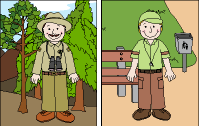 |
Summary of the activity: This is a role play on the topic "The work of the park keepers and the forest rangers". Objectives: To develop in the children experiences on the work developed by some men to take care of and to make them respect some common properties (parks and forests). Procedures: Game Material Resources: The tools that the park keepers and forest rangers use.
Development of the activity: We will be explain to them that both take care of the common properties. The park keepers take care of the parks so that they stay pretty, their work consists of making the people take care of and respect the parks. The parks are common properties, for everybody’s use, and the children play in the parks, and also their parents and their grandparents enjoy them, the shade of their trees, their flowers and fountains, this is why we have to take care of them. These workers do not allow us to step on the grass, nor to spoil the flowers, nor to pick up the fruits and branches of the trees; they make sure that we do not throw waste nor litter to the fountains of the parks, their work is to take care of the parks, so that they stay clean and full of flowers. Other workers who also take care of the common properties are the forest rangers. The forests are very pretty places where there are many trees and little animals that have to be taken care of. The forest rangers do not allow us to hurt the animals, nor to hunt them, they take care that nobody smokes in those places nor start fires because the forests can be destroyed. They also take care that the trees are not cut down in order not to damage the environment, because the trees of the forests purify the air and produce rain, so necessary for the life of the plants, animals and the man. There are zones where the visitors can make their bonfires if they go to a picnic in the forest, but only in those zones and always following the rangers’ instructions.
2nd Part This game must fundamentally be played in the outside area or in the garden of the school. 3rd
Part |
CRITERIAL
ASSESSMENT |
|||
Observed
conduct |
YES |
NO |
Comments |
They
got to know the work of the park keepers and the forest rangers to
take care of and to preserve the parks and forests. |
|||
They
understood the importance of the work done by these men. |
|||
They
needed help to understand the importance of the work done by these
men. |
|||
They
carried out in an appropriate way their respective roles in the game. |
|||
ACTIVITY
No 7 |
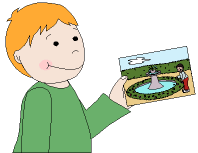 |
Summary of the activity: This activity is a critical experience that will serve to evaluate this block. It is a game in which the child will be presented with a card deck with situations, images and/or questions, the teacher explains the cards and the child must answer, if he does it well he will score the points indicated in the card, they are added and in the end the one who scored more points will be the winner. Objectives:
Procedures: Material Resources: Cards with diverse representations.
Development of the activity: The
rules of the game are explained: It is not necessary to tell the children about the sum of the points; we can simply explain how they can win the game through the colour of the cards. When the child picks the card the educator will explain to him what it says, if it is a situation, a question or an image with a question, and the child will have to explain it or to answer it. Each card will have a value that is determined by the complexity of the content that appears in it. The cards with 5 points will have the blue colour and those of 10 points, the red colour. Each child is presented 2 blue cards and a red one. Card
examples: There will be 3 cards per child, six examples of cards have been indicated, the teacher will make up the rest, he can use the questions and explanations on the common properties used in the activities of this block. He will also use what the children have said about the care and respect for the common properties.
2nd Part |
CRITERIAL
ASSESSMENT |
|||
Observed
conduct |
YES |
NO |
Comments |
They
recognized what a common property is. |
|||
They
needed help to know what a common property is. |
|||
They
knew how to explain the measures to care and respect for the common
properties. |
|||
They
needed help to explain the measures to care and respect for the common
properties. |
|||
They showed through their answers feelings of respect and care towards
the common properties. |
|||
| They gave a correct opinion about the common properties when they analyzed the cards. | |||


